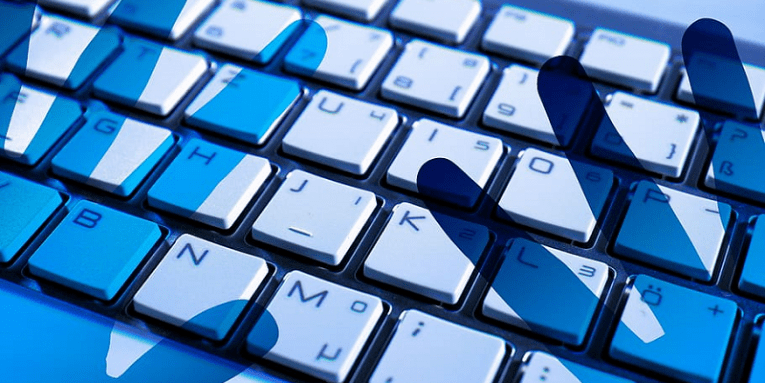Top Windows Malware Tips That Will Help You Secure Your System

Our technology is evolving together with us. This constant growth encompasses every single sphere of our lives. Unfortunately, bad things tend to grow as much as the good things. Although we are now much farther in terms of cybersecurity than we were 10 years ago, threat actors aren’t sleeping either. It seems that the lines between different cybersecurity threats are blurring, and we have to employ a holistic view that will help us ensure our security in 2020.
With this entry, we would like to draw your attention to the most common Windows malware threats, and what we can expect from that. After the general overview, we’d also like to give you nine tips on how to secure your computer against malware.
Table of Contents
The newest malware trends
As mentioned, it is increasingly hard to ascribe one type of malware to a cyberattack these days. With the blurring lines, similar malicious tactics are being used both for the individual and corporate level attacks. Thus, Windows malware that could be used to target a multinational corporation could also infect someone’s personal desktop computer.
What’s more, it is no secret that we are in the midst of cyber warfware, and while cyber war attacks might usually aim for high-profile targets, it doesn’t mean that the regular user couldn’t take a brunt, too. With sophisticated social engineering, Windows malware could easily hit someone on an individual level, especially if that someone works for a big company.
Cybersecurity writer at Forbes Zak Doffman also suggests that the acceleration of the IoT device use provides a network of always connected devices that cyber criminals might attempt to enter anytime. IoT devices are vulnerable endpoints that could be used as a gateway into the main system. For that reason, it is strongly recommended to employ multiple networking, where IoT devices and main IT devices (like laptops, desktop computers, main servers, mobile devices, etc.) are connected to different networks.
The main types of malware threats
All in all, the actual types of malware haven’t changed much. The main difference between what we were used to 10 years ago is that cyber-attacks have become more multi-faceted, and different types of malware are often used together. Also, the practice of “malware as a service” is increasingly commonplace, where threat actors buy their malware from underground developers instead of making their own.
There are many ways for malware to reach its target. Phishing remains one of the most common malware distribution methods, and it often comes hand-in-hand with ransomware. Regular computer viruses also haven’t disappeared anywhere, and as we’ve mentioned, the acts of cyber warfare are changing the cybersecurity landscape. In a sense, the aspect of crime remains the same: criminals still want to steal something that’s not theirs, whether it’s offline or online. It’s just that that the tools differ.
Cybercriminals are also able to carry out their plans because the systems they target are often vulnerable. The network might be vulnerable because of the excessive use of IoT devices. Business emails could be easily compromised because of poor password hygiene. Password reuse is never an option, and companies have to consider a plethora of potential security issues when it comes to cloud hosting.
Top 5 Windows malware threats
To give you a better idea of what Windows malware is capable of, we will go through the five top Windows threats as published by the BlackBerry 2020 Threat Report. There are more threats mentioned in the report, but we have selected five the most vicious ones so you could get a better picture of the cybersecurity landscape. Once we go through those threats, we will dive straight into the tips that will help you secure your computer against malware.
Emonet. Emonet is a banking trojan that was first detected in 2014. It attacks users via spam emails, and its aim is to steal banking credentials and other important information. Emonet might sound like an old infection, but it re-emerged in 2019 through a new spam campaign. To reach its victims, this trojan employs sophisticated social engineering techniques, thus tricking users into installing it on their systems.
Ramnit. This malicious infection is a virus that corrupts Windows Preinstallation Environment executable files. It can also spread to removable media (like a worm). It is persistent and hard to detect. Depending on what the threat actors intend to do with their malicious campaign, Ramnit could be used to either steal information or take over the system.
Quakbot. This malware encompasses an entire family of malicious infections. The virus is used to gain remote access to the infected computer. This infection is also known to be well adapted to avoid detection, so hackers could make use of the infected device or the network for a continuous period of time before any discrepancies are detected.
Poison Ivy. This is another trojan on the list. It’s a remote access tool that works as “malware as a service.” It means that the owner can build their own infection, and then use to infect multiple systems for sensitive information theft, data leaks, and espionage. Since it is a trojan, Poison Ivy usually employs spam email campaigns for distribution.
Kovter. This infection is difficult to detect because it doesn’t drop additional files and mainly targets Windows Registry. It employs social engineering to reach its victims, and its latest distribution vector is third-party advertisements. The malware is also used to generate clicks for its owners through the pay-per-click system. Hence, the surge in online advertisements that users encounter on their web browsing sessions could be one of the first signs that Kovter is on-board.
As you can see, trojans, viruses, and multi-component infections are rampant, so it is important to secure your computer against malware. To help you protect your system against Windows malware, we have compiled a list of security tips below.
9 Security Tips
1. Password hygiene. Passwords are important at both corporate and individual levels. It is necessary to avoid password reuse. You must also update your passwords regularly, and change default passwords that come with your devices. To make matters easier, you can employ Cyclonis Password Manager (check out the free trial here) to help you come up with new passwords and store them accordingly.
2. Antivirus software. If you haven’t invested in antivirus software yet, you could be easily exposed to all sorts of Windows malware. A powerful security tool of your choice will protect your system or alert you if something goes wrong. Also, don’t forget that sometimes Windows malware is hard to detect or notice. Hence, regular system scans with antivirus software should help you minimize the risk of falling prey to a cunning infection.
3. Software updates. We cannot stress it enough: software updates are vital. It is natural that users forgo software updates if the copies of their programs and operating systems are not genuine, but that is a great security risk. Updates are not there to just change your interface layout. They also fix bugs and vulnerabilities that can be exploited by Windows malware actors.
4. System and file backup. With ransomware on the loose, creating a file backup is probably the best way to mitigate potential damage. More often than not, it is not possible to acquire the decryption key to restore encrypted files. Hence, creating copies of your files and storing them on a cloud drive or an external storage disk is the best option to secure your data.
5. Downloads. Downloading files is like second nature to us now. However, to avoid Windows malware, you should download files and programs only from official websites. Avoid third-party sources and file-sharing pages. Also, before you download a file you received via email, you should probably scan it with a security tool. Just to make sure you’re not being targeted by a phishing attack.
6. Pop-up ads. You might think random pop-up ads are more annoying than dangerous, but they actually present a serious computer security issue. As mentioned, Kovter is one of the Windows malware infections that employ pop-up ads to generate clicks. Pop-ups could also be used to redirect users to corrupt websites and expose them to shady marketing schemes. Hence, it is important to employ ad blocking software to avoid that.
7. Outgoing links. You might encounter hyperlinks in your emails, on websites, and even in the text messages that you receive. Unless you trust the sender 100%, it wouldn’t be wise to click these links at once. Just like pop-ups, they might be part of a bigger scam, and you could land on a dangerous website that could further jeopardise your cybersecurity.
8. Third-party content. Whether you are aware of it or not, you are often exposed to third-party content that might not be safe. If you employ a lot of browser extensions and you tend to visit pages that are full of third-party ads, it is not surprising that you may encounter content you don’t recognize. While third-party content is not inherently malicious or dangerous, it could still be exploited by Windows malware developers to distribute their infections. So be careful.
9. User training. All the steps above are vital to ensure that you avoid Windows malware, but it is also extremely important to educate yourself about cybersecurity and cyber threats. Whether you’re an individual user or you’re an employer with a ton of employees who are exposed to potential threats every single day, you have to make sure that you or your employees and colleagues know how to recognize a potential threat. Even the latest antivirus software may not be enough if you open the door for Windows malware yourself.








